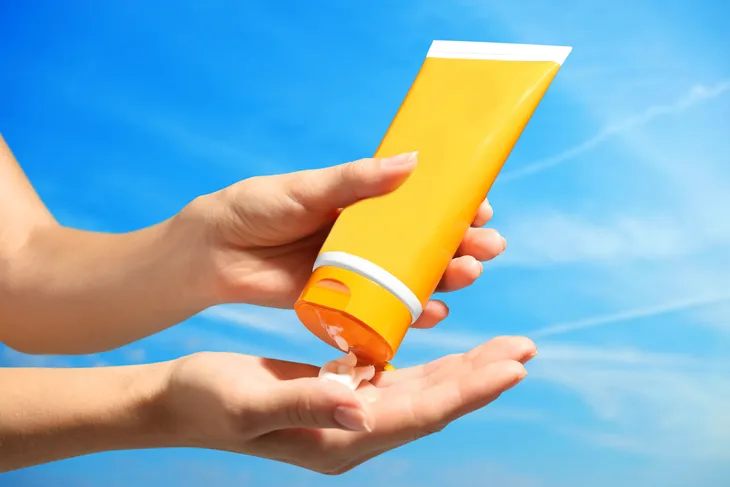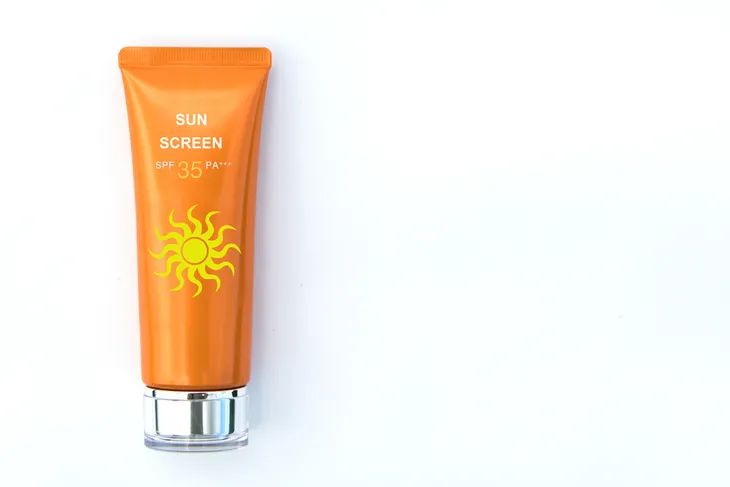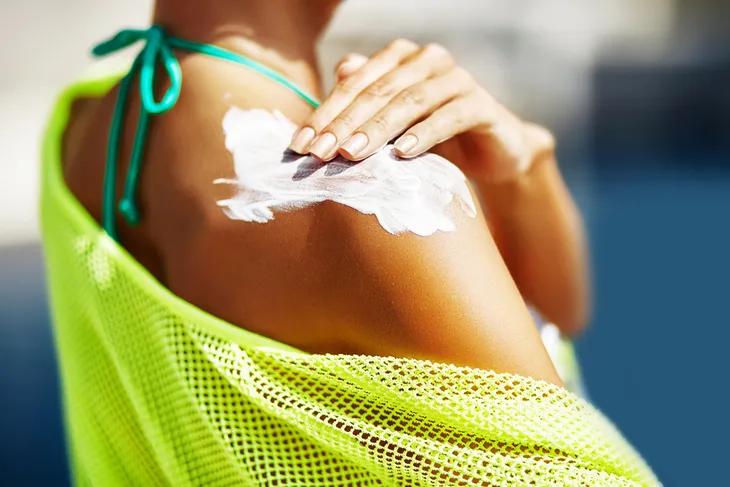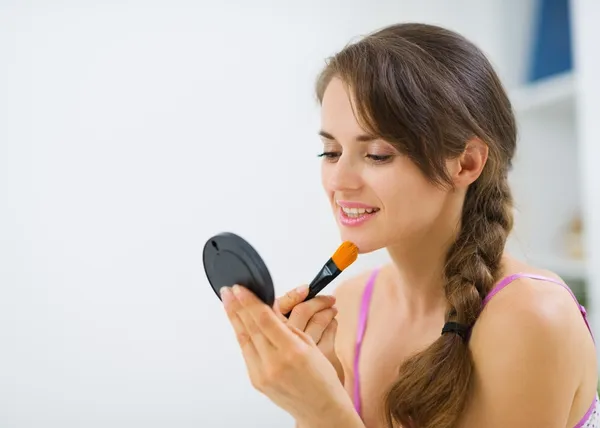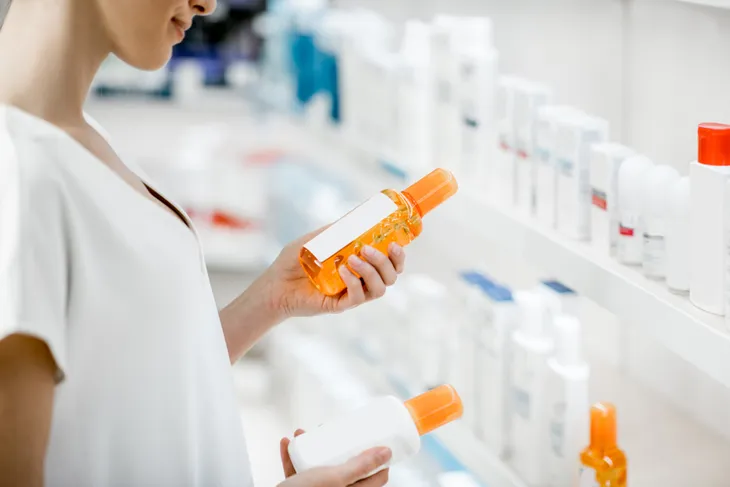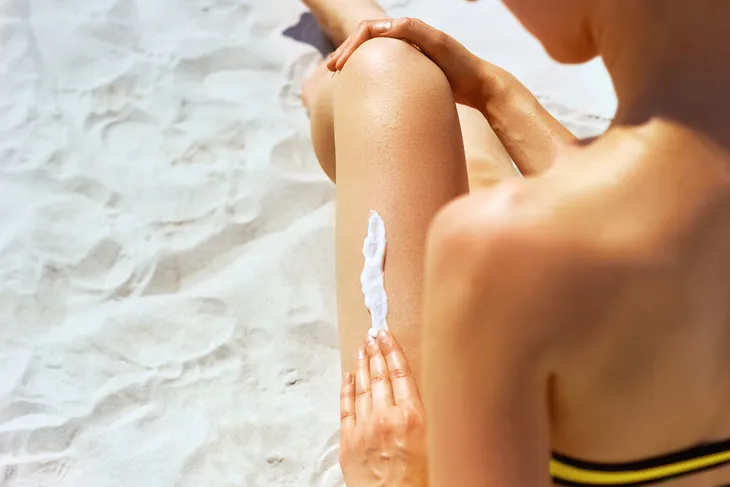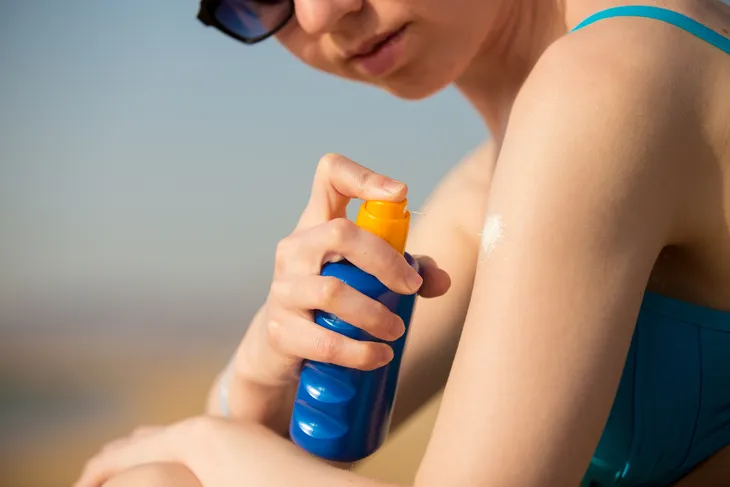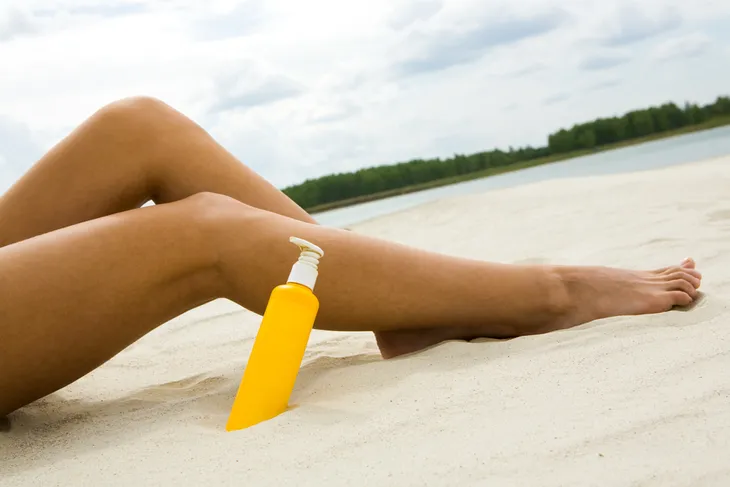So you’ve put on your sunscreen and you’re ready to head out for a day of fun in the sun… what could possibly go wrong? Well, actually, a number of things, if you’re not using the sunscreen properly – and that’s actually more common than you might think.
From avoiding sunscreen on cloudy days to not fully applying it, there are a number of sunscreen rules that are inadvertently (or purposely) broken every hot day. However, taking a few moments to correctly use sunscreen can prevent days of pain or even skin cancer, so listen up about these 14 common mistakes…
Make Sunscreen a Routine
Reader’s Digest explains one of the biggest mistakes people make on a regular basis is that they only put on sunscreen when they’re planning on heading out into the sun. But you should put it on even when you’re staying indoors.
UV radiation, in particular, UVA radiation will pass through glass, windows, and clouds. It even cites a study from the University of Washington that shows more than 50-percent of potentially deadly skin cancer cases started on the left side of the body – the side that’s exposed to more UV light when driving (and in Australia, where they drive on the other side of the road, more cases were found on the right side of the body.) So apply sunscreen every day, suggests the source.
Higher SPF Doesn’t Mean You’re Immune
According to the same source, even if you slather yourself with SPF 75 sunscreen, it doesn’t mean you can frolic on the beach for the entire day. In fact, “Some experts believe that higher numbers, such as SPFs 75, 90, and 100, give people a false sense of security,” notes the source.
The higher SPF does give a slightly better protection in the sense it makes up for inadequate application when it comes to applying sunscreen. Most people don’t use enough. For example, for most individuals, when using a SPF 30 or higher, they are probably only getting an SPF 15 coverage. You need to use 1-teaspoon for head and neck to get the specific SPF labeled on the bottle.
Lay It On Thick
You don’t have to use dainty amounts of sunscreen – slather it on liberally for the best protection, says Health.com. There’s an old rule you can follow that outlines using a “shot glass worth” (1.5-ounces) of sunscreen during each application, it notes.
However, it warns that since many people are now using spray formulas, they may not be applying enough. It’s hard to gauge how much you are putting on with sprays. It’s better than not reapplying, but cream and lotion formulations are much more reliable.
Wear It Under Your Clothing
Another common mistake, says the source, is that you’re applying sunscreen around your clothing. “Skin cancer can strike anywhere, so it’s best to apply sunscreen when you’re buck naked,” says Health.com.
When people have clothing or swimwear on already, they usually try to apply sunscreen as to not get any on the fabric, adds the source – adding to the chance of missing spots. And after all, clothing can shift, leaving parts of your skin exposed that you thought were protected.
You’re Missing The Finer Details
When many of us apply sunscreen, we’re only looking at the big picture – that is, our arms, legs, chest, and back. While many people remember to apply it to their forehead and cheeks, they’re missing other parts of the head that are just as vulnerable to the sun, says Reader’s Digest.
Those areas include the ears, lips, and scalp, it adds. The source cites a doctor that says she sees patients develop skin cancer on these often-neglected spots – including the backs of hands and the tops of the feet. Look for lip balms that have an SPF rating, it suggests. There are also sunscreens formulated specifically for the scalp, it adds.
Make Sure It’s Water Resistant
If you’re applying sunscreen thinking you’ll be fine all day because you’re not swimming, then think again. As Reader’s Digest points out, sunscreen doesn’t prevent you from sweating on a hot day, and sweat can wash away the protection.
It says to ensure the product you’re using matches the activity – “especially if that activity involves sweat, a pool, or the ocean.” Non-water resistant sunscreens have a nasty habit of sliding into your eyes and stinging, whereas water-resistant formulations generally don’t, it adds. Make sure to follow re-application instructions regardless of how “waterproof” the product claims to be (generally every 2-hours).
Don’t Assume Makeup is Enough Protection
As the Huffington Post points out, you may be lulled into a false sense of security due to a mention of SPF on your bottle of foundation. However, while the SPF may actually be adequate, volume is the issue: “A dab of foundation isn’t the same as the amount of sunscreen you’d slather on your face,” it notes.
It adds that makeup generally wears off throughout the day, but you may not be re-applying makeup like you would be re-applying sunscreen. Use real sunscreen as a foundation underneath your foundation for the best protection, it adds. For best protection, apply sunscreen under your foundation.
Sunscreen Isn’t Just For Summer
Chances are when the hot weather goes away, so does your sunscreen – into a cupboard. However, as Reader’s Digest explains, the UV rays of the sun don’t fly south when winter comes, so that means you should still be using skin protection.
Specifically, it says UVB rays decrease dramatically in the colder months, but there are still UVA rays that linger year-round. As other sources point out, you can also be affected by sunlight reflecting off snow. There’s even mounting evidence that your skin may be damaged by light from florescent bulbs and computer screens, another reason to use sunscreen year-round, it adds.
Make Sure Sunscreen Is Made For Year-Round
Speaking of UVA and UVB rays, Reader’s Digest says many people ignore this while seeking sunscreen products and instead focus on SPF. You need to see the words “broad spectrum” on the container to know that both types of rays are blocked, it adds, noting many products don’t shield well against UVA.
Even if you do find a product that covers the broad spectrum, “a product’s effectiveness at screening out UVA rays is generally only about a third of its SPF,” it adds. That means an SPF 30 becomes an SPF 10 where UVA is concerned – so aim for a higher protection factor.
Darker Skin Can Be Burned By Sun
Having darker skin gives you a bit of an advantage to avoid sunburns and skin cancer, but it doesn’t make you immune to them, says Reader’s Digest – “it’s a myth to think that skin color alone is enough to prevent melanoma and other skin cancers.”
And that can make cases of skin cancer even more serious for those with dark skin, as it may not be diagnosed right away because people hold on to the assumption they’re safe due to their skin tone, it adds. No matter what your skin color is, you should be following the same rule of at least SPF 30 re-applied every 2-hours, it adds.
More Expensive Doesn’t Mean Better
This can apply to a lot of products, not just sunscreen. However, as Health.com explains, some people are under the assumption that they’ll be invincible in the sun if they pay more for super-high SPF sunscreens.
The source says some experts believe high SPF sunscreens are an unnecessary expense, as SPF 30 blocks out 97-percent of UV rays, and SPF 50 blocks out just 1-percent more. Nothing is 100-percent. However, it does say that higher SPFs can make up for little more protection when inadequate amount is used.
Take Time To Let it Sink In
Health.com says another common faux pas is to wait until you’ve hit the beach in your bikini before you start applying the screen. However, you should do this before you put on your swimsuit or other clothing (as we mentioned earlier), because sunscreen needs time to absorb, it adds.
The source suggests applying your sunscreen 30-minutes before you plan to head outdoors. If you don’t, you may be putting your skin at risk in those minutes before the product has a chance to do its job, it adds.
Don’t Just Stay With Spray
Reader’s Digest knows that you might be tempted by the convenience of spray-on sunscreen, but you shouldn’t rely on it as its “potential health risks still haven’t been fully investigated.” In particular, there are concerns about the dangers of inhaling it, particularly where children are concerned, it adds.
If you do insist on using it, the source says to spray the product into your hand first, and then rub it into your skin as you would a lotion. It notes this is an effective way to ensure full coverage, especially if it’s windy out and the spray is going in all directions. Be sure to apply more than 1-coat, it adds.
Yes, Sunscreen Expires
It may not smell like spoiled milk, but sunscreen definitely has an expiration date (which may be printed on the bottle somewhere), says the Huffington Post. “The active ingredients in sunscreen can deteriorate over time,” it notes, meaning you’ll get less protection than the bottle promises.
It also says an open bottle of sunscreen is more likely to get contaminated with germs, because there are preservatives in the mix that also lose their effectiveness over time. Be sure not to store the bottle in a hot place like the glove box in your car, as constant heat can break down its effectiveness, it adds.

